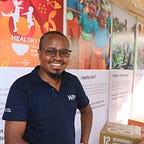The hunt for water — to the last drop
Farmers in semi-arid Baringo County in northwestern Kenya adopt farm ponds to harvest surface run-off to grow crops
Mary Keitan is a 39-year-old mother of seven. Her three-acre farm is the family’s main source of food. But the rains in Baringo County, northwestern Kenya, have not been kind of late.
“I planted butternut on two acres but just before the crop could mature, the river dried up,” said Mary. “I lost more than half of the harvest.”
Mary relies on water drawn from Wasegesi river via earth canals. The river is five kilometres from her farm in Sesia village. She says that because of the high number of farmers relying on the river to grow crops upstream, water hardly ever reaches to her farm.
“In this village, we plant when the farmers upstream are harvesting,” explained Mary. “That is the only time we are assured of getting some water.”
An oasis in the desert
But in December last year, a group of farmers from Baringo visited asset creation activities in Makueni County, 430 kilometres to the southeast.
Moses Cheruiyot, secretary of the Sandai asset creation group in Baringo was one of them. Mary’s village, Sesia, falls under this group.
“We were shocked when we visited Makueni,” he said. “There are no rivers, yet farmers are growing high value crops, such as tomatoes, which have high water demand year-round.”
To Mary, Makueni is the land of milk and honey.
“If I had water throughout the year, I would not require any other help,” said Mary. “I have faith that if my crops grow and mature, and I sell part of the harvest, I can stand on my own — all I need is water.”
Lessons learned
In semi-arid Makueni County, hundreds of farmers irrigate crops using run-off water stored in farm ponds. At the base and on the walls of the pond, a thick plastic lining is laid to prevent water from seeping into the ground. A roof made of a shade net is fixed to prevent water loss through evaporation. Farmers use hand pumps to extract water from the ponds and drip irrigation kits to irrigate the crops. Silt traps constructed at the inlet of the pond are used to prevent dirt and excessive soil from settling in the pond.
Baringo is now eager to mimic this technology. Following the group’s visit to Makueni, Mary immediately started excavating a farm pond on her plot.
So far 65 farmers across Baringo County have adopted the technology and are at various stages of digging. Over 1,000 other farmers in neighbouring East Pokot are also excavating farm ponds
“We believe that these farm ponds will change the face of agriculture in our village and beyond,” said Moses.
“It was very painful watching my butternut crop wither away,” said Mary. “I used to walk three kilometres to fetch water in a 20-litre jerrycan, but I would only manage three trips in a day.”
That was not enough to save the crop.
Most of Mary’s mango trees also dried up. Her bean crop fared badly. She only managed to harvest 70 kilogrammes of beans from a section that should have given her almost four times that.
A hopeful future
After such a poor season, the possibility of storing water and using it during the dry season is one that brings a lot of hope. And Mary wants to cash in on the farm pond as soon as possible.
The community is jointly excavating farm ponds from one homestead to the other, in just the same manner they pulled together to dig irrigation canals.
“The money that I get through this project [asset creation] helps me buy food for my family during the dry months,” she said. “To those that make this [work] possible, I can only say thank you for helping us.”
When Mary was joining the United Nations World Food Programme (WFP) asset creation activities, her children were underweight and receiving a peanut-based paste — supplied by WFP’s nutrition arm — to treat malnutrition.
WFP helps families build or repair assets that in turn improve food availability home while increasing their chances of producing a surplus for local markets.
“Once we complete the farm pond and God willing we get some rains this coming season [March to May], I will be able to feed my family without relying on the cash from WFP,” said Mary.
In Kenya, WFP’s asset creation activities are made possible through the generous support of: Australia, Canada, the European Commission, Finland, Germany, Italy, Japan, Kenya, Luxembourg, Multilateral Donors, Norway, Private Donors, Russian Federation, Sweden, Switzerland, UN CERF, and the United States of America.
Read more about WFP’s work in Kenya
